Our Favorite Liverpool Hotels
• 5-star: DoubleTree
• 4-star: Titanic
• 3-star: The Z
• For Couples: Hope Street
• For Families: Staycity
• Best Pool: Hope Street
• Liverpool Lime Street Station: The Liner
• Liverpool Central Station: Quest
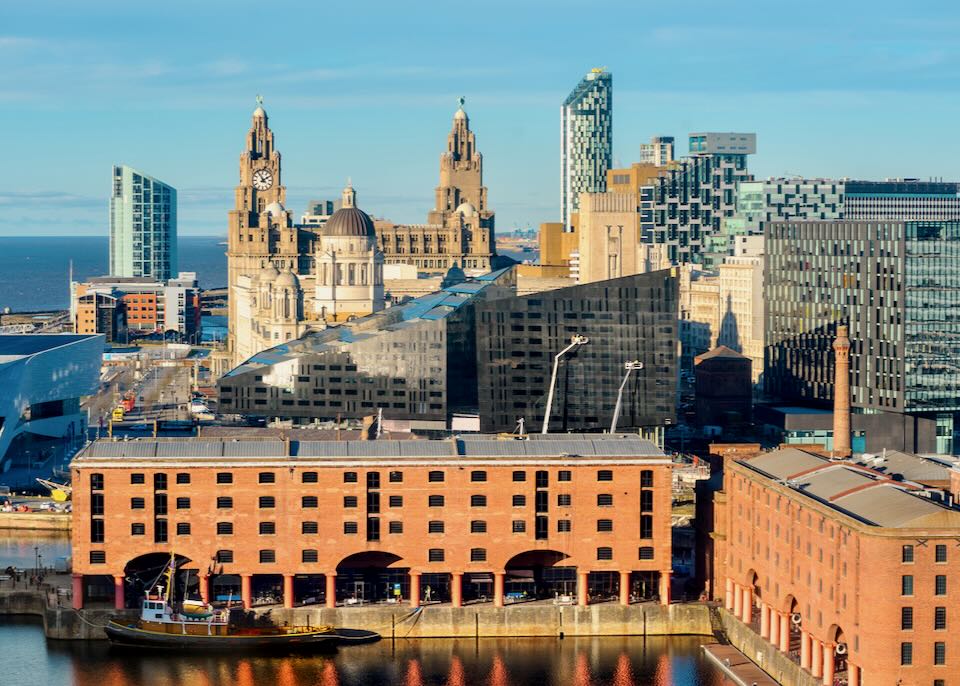
View of Liverpool’s Royal Albert Docks, backed by the “Three Graces” and modern skyscrapers.
Spread along the east bank of the Mersey River, at first glance, this industrial city is not much of a looker. And yet, if you stay here for a few days, you’ll begin to see why Scousers (local term for Liverpudlians) have a fierce love for their complex, gritty home. Its wealth originally generated by the trading of West African slaves, raw materials, and locally-made hardware, Liverpool became Britain’s second most important port after London during the heyday of the British Empire in the 19th century and played a pivotal role during WWII. In the 1960s, the city became synonymous with the Mersey Beat and produced the world’s most famous band – The Beatles. More recently, this football (soccer)-obsessed city has undergoing urban regeneration and its impressive cultural heritage, world-class museums, and a hip dining scene will make you wish you could extend your vacation.
The majority of Liverpool’s best hotels – ranging from luxurious chains to quirky boutique digs – are liberally sprinkled across the City Centre, Ropewalks, Liverpool Docks, Baltic Triangle, and the Georgian Quarter. In spite of its size, Liverpool is surprisingly walkable, with good public transportation connections to neighborhoods farther out.
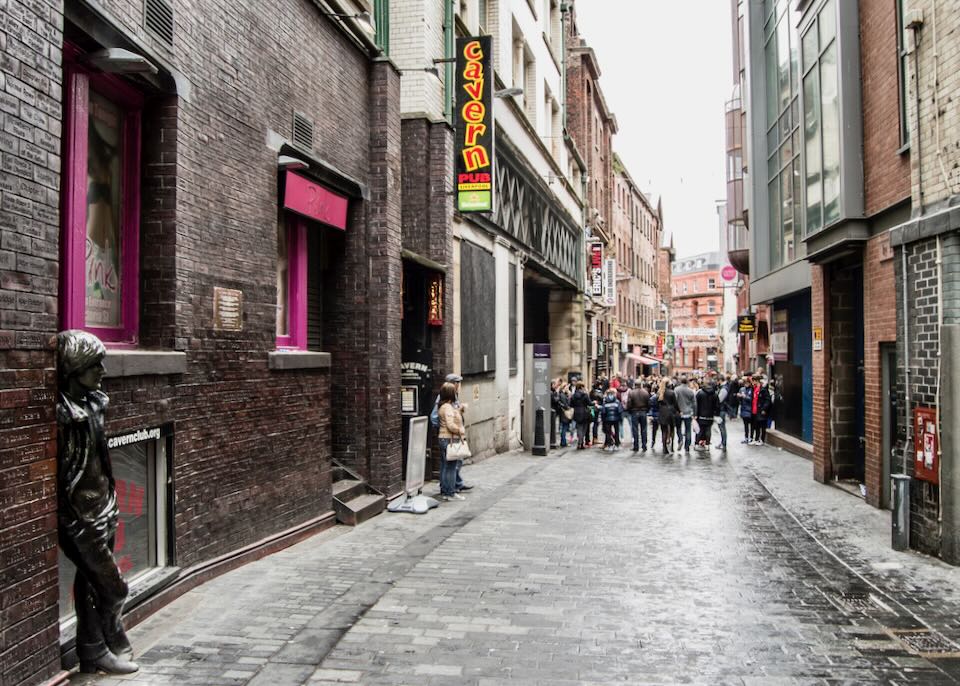
The John Lennon statue on Mathew Street in Liverpool City Centre leans casually against a building, gazing across at the famous Cavern Club, where the Beatles got their start.
Liverpool Neighborhoods
Your first encounter is likely to be with the Liverpool City Centre – the city’s most central neighborhood, bordered to the west by the Mersey River and the Liverpool Docks, and by the city’s two main train stations to the east (handy if you’re taking a train to or from London). Good for shopping, dining out, and nightlife, this particularly busy part of town has a handful of notable attractions, including the Liverpool Beatles Museum and the legendary Cavern Club where the band used to play.
Just south of the City Centre, the Baltic Triangle is a trendy, creative and compact neighborhood, defined by its industrial past and featuring numerous warehouses and factories that have been turned into art and culture venues as part of the city’s post-industrial renaissance. There’s good dining here, too; you can find anything from street food to cutting-edge restaurants and craft breweries.
Flanking the City Centre and the Baltic Triangle to the west are the Liverpool Docks that stretch along the river – the most visible reminder of Liverpool’s past as Britain’s second port. Here you’ll find many of the city’s heavyweight attractions, as well as the Exhibition Centre, music and sports arenas, a cluster of 4-star restaurants, and ample dining options.
Squeezed between the Baltic Triangle and Ropewalks, and bordered by the City Centre to the north, Liverpool’s Chinatown – Europe’s first Chinese enclave – dates back to the 1850s, when trade between Liverpool and Shanghai led many Chinese merchants sailors to settle here. While short on attractions (besides the Chinese New Year displays in January or February) and accommodations, Chinatown has some excellent restaurants.
Just to the east of Chinatown, Ropewalks is arguably Liverpool’s most characterful neighborhood, its cobbled streets lined with cool independent and vintage stores, contemporary art galleries and repurposed rope-making factories, converted into cultural venues. You’ll find some excellent boutique hotels here, as well as varied dining and lively bars.
Adjoining the City Centre to the east is the Georgian Quarter, replete with handsome historical buildings and home to Liverpool’s two cathedrals, as well as assorted cultural venues and art galleries. There’s good dining here as well, and the city’s two train stations are a short stroll away.
In the southeast suburbs of Liverpool, the leafy, residential neighborhood of Allerton is a must for hardcore Beatles fans. Whether you want to take a look at Lennon and McCartney’s childhood homes or check out the inspiration behind the Beatles’ most famous songs, it’s worth driving or taking a bus out here.
The Best Places To Stay in Liverpool
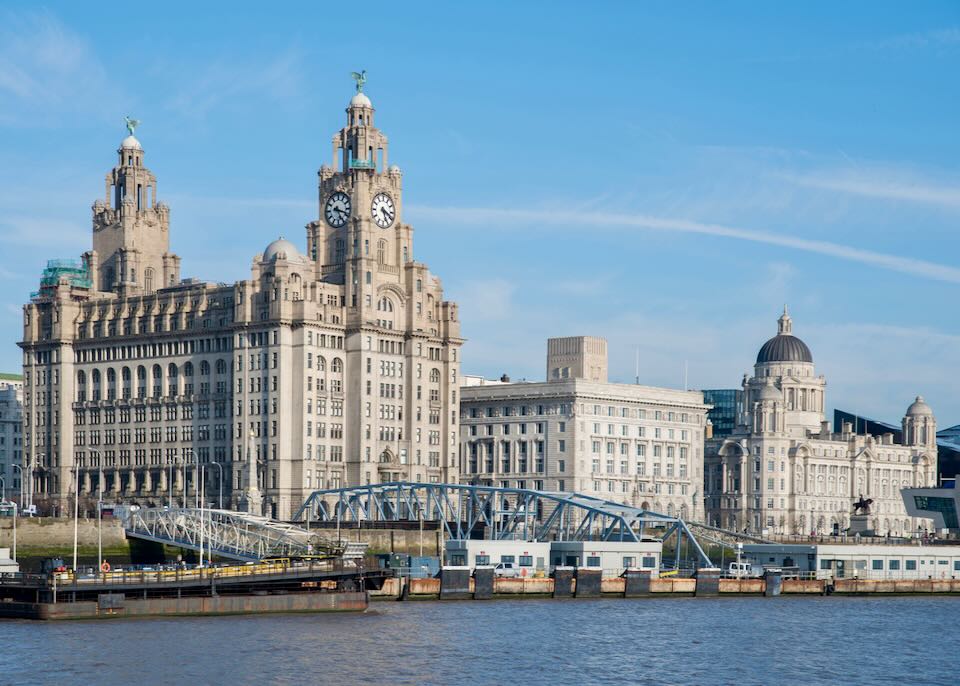
Liverpool’s iconic trio of historic waterfront buildings (the Liver Building, Cunard Building, and the Port of Liverpool Building) is known as the “Three Graces.” The wonderful Crowne Plaza City Centre sits just next door.
- Best Luxury Hotels in Liverpool
Titanic Hotel • Crowne Plaza City Centre • INNSide Liverpool • Hotel Indigo Liverpool • DoubleTree Hotel & Spa- Best Boutique Hotels in Liverpool
Hard Days Night Hotel • The Baltic Hotel • Hope Street Hotel • The Resident Liverpool- Best Cheap Hotels in Liverpool
Z Liverpool • Duke Street Boutique HotelBest Neighborhoods in Liverpool for…
- Best Neighborhood in Liverpool for Sightseeing: Liverpool Docks, Allerton, City Centre
If you’re into sightseeing, don’t miss the city’s biggest attractions, found along the Liverpool Docks: Tate Liverpool art gallery, International Slavery Museum, Maritime Museum, and the British Music Experience, with a particular emphasis on The Beatles. If you’re a die-hard Beatles fan, don’t leave without paying a visit to Paul McCartney’s and John Lennon’s childhood homes in the suburb of Allerton, as well as the Strawberry Field and Penny Lane sites that inspired Beatles’ song of the same name. The Liverpool Beatles Museum along with the Victoria Gallery in the City Centre and the two cathedrals in Georgian Quarter are also worth your time.- Best Neighborhood in Liverpool for Nightlife: City Centre, Ropewalks, Baltic Triangle
There’s a palpable buzz to the City Centre, with its lively cluster of chain pubs and cocktail bars around Dale Street and Cook Street. In the Baltic Triangle, you’ll find specialized cocktail bars and craft breweries on or near Jamaica Street, with the largest concentration around Stanhope Street, just south of the neighborhood boundary. Ropewalks is also no slouch when it comes to bars, with many located on Duke Street, Seel Street, and Wood Street. If you want to mingle with local students, head for Hope Street in the Knowledge Quarter, near the university.- Best Neighborhood in Liverpool for Food and Restaurants: Ropewalks, Georgian Quarter, Chinatown
While there is no shortage of excellent restaurants all over Liverpool, there are two neighborhoods that punch above their weight when it comes to edible offerings. Ropewalks in particular is home to award-winning places such as Cowshed Liverpool, Salt House Tapas, and Maray Bold Street, while Roski Restaurant (modern British) is the fine-dining star of the Georgian Quarter. There are also plenty of casual restaurants covering all manner of cuisines dotted around the City Centre and the Royal Albert Dock, and numerous restaurants specializing in regional Chinese cuisines in Chinatown.- Best Neighborhood in Liverpool for Families: Liverpool Docks, Georgian Quarter
Liverpool Docks is a relatively quiet neighborhood, ideal for families looking for 4-star comfort and facilities, since that’s where many of Liverpool’s chain luxury hotels are located. Also, you’re right near some of the city’s best sightseeing, which is particularly good for older kids. The Georgian Quarter is another good option, since it’s also relatively quiet and yet only a short walk away from all the action.- Best Neighborhood in Liverpool to Stay for First Timer: Liverpool Docks, Ropewalks, City Centre, Baltic Triangle
If it’s your first time in Liverpool, and especially if your vacation time is limited, it’s hard to go wrong with any of these neighborhoods. It depends what’s a deal breaker for you: Liverpool Docks is particularly good for sightseeing, the City Centre is walkable to all the main sights and well-connected by train to other cities, whereas the Baltic Triangle and Ropewalks are also walkable to all the main sights, benefit from excellent dining scenes, and have a unique post-industrial vibe that really sums up the city.- Most Romantic Neighborhood in Liverpool: Ropewalks, Liverpool Docks
Liverpool might not immediately evoke thoughts of romance, but there’s an undeniable charm in walking beside the River Mersey at the Liverpool Docks, and watching the sun set across the river and the Titanic monument can be unexpectedly enchanting. For a different experience, wander the cobbled lanes of Ropewalks with your significant other or indulge in a stay at a boutique hotel in the area, perfect for a romantic getaway.- Best Neighborhood in Liverpool for a Local Vibe: Ropewalks, Baltic Triangle
The Baltic Triangle and Ropewalks are Liverpool’s most creative neighborhoods, home to arty types and young professionals. The repurposed warehouses and factories in both reflect the city’s industrial heritage, and Ropewalks in particular has a high concentration of independent stores, vinyl shops, and on-trend restaurants.- Best Neighborhood in Liverpool for Walking: Liverpool Docks, Ropewalks
Much of Liverpool is walkable, with the city made up of relatively compact neighborhoods that are easy to get around on foot. It’s hard to beat the Liverpool Docks for the gritty urban river vistas, as you wander past the dock warehouses-turned-museums and various riverside memorials, or the narrow, cobbled streets of historical Ropewalks for sheer strollability (as long as you’re not wearing high heels!).- Safest Areas of Liverpool
In spite of its gritty demeanor, Liverpool is a generally safe city. Most neighborhoods frequented by visitors are safe to walk around at is one of the safest cities in Europe. Pretty much all neighborhoods are safe to walk around at any time of day, though at night, it’s a good idea to stick to well-lit areas and avoid shortcuts through deserted streets. Alcohol-fuelled revelry in the city’s nightspots occasionally results in fisticuffs.- Unsafe Areas of Liverpool
Liverpool’s unsafe neighborhoods are generally residential and mostly clustered in the north of the city. These include Walton, Everton, Kirkdale and Vauxhall, and visitors have no reason to venture there. Watch out for pickpockets in markets and other busy areas, including around the train stations in the City Centre.The 6 Best Neighborhoods in Liverpool for Tourists
1. City Centre
View of the Liverpool skyline from the Strand Street City Centre.
Stretching from the bank of the River Mersey to Liverpool’s two main train stations – Liverpool Lime Street and Liverpool Central – the bustling heart of the city is home to a number of attractions, from the legendary Cavern Club (where the Beatles used to play) to the Liverpool Beatles Museum and some excellent shopping along Church Street. It’s also one of the liveliest parts of town, with the bars and clubs along Concert Square and Chapel Street hopping into the early hours, particularly on weekends.
- Best Hotels in Liverpool City Centre
Titanic Hotel • Hotel phone: +44 151 559 1444
Crowne Plaza City Centre • Hotel phone: +44 151 243 8000
Hard Days Night Hotel • Hotel phone: +44 151 236 1964
INNSide Liverpool • Hotel phone: +44 151 832 0960
DoubleTree Hotel & Spa • Hotel phone: +44 151 556 1222
Hotel Indigo Liverpool • Hotel phone: +44 151 559 0111
Quest City Centre • Hotel phone: +44 151 318 1809- Best Cheap and Midrange Hotels
The Z Hotel Liverpool • Hotel phone: +44 151 556 17702. Georgian Quarter & Knowledge Quarter
The University of Liverpool’s historic Victoria Building now houses the Victoria Gallery & Museum.
With its refined Georgian architecture dating back to the 19th century, this largely residential quarter and cultural haven is one of Liverpool’s most refined neighborhoods. Besides the two cathedrals on Hope Street, there are numerous cultural venues to explore, from the Royal Liverpool Philharmonic Hall to the Everyman Theatre. The main street is dotted with numerous bars and bistros, as is Hope Street, which connects the Georgian Quarter to the adjacent Knowledge Quarter, home to Liverpool University.
- Best Hotels in the Georgian Quarter & Knowledge Quarter
Hope Street Hotel • Hotel phone: +44 151 709 3000
The Blackburne Arms • Hotel phone: +44 151 709 91593. Ropewalks
Inside view of the of Bombed Out Church, St Luke’s. The church was built between 1811 and 1832, It was badly damaged during the Liverpool Blitz in 1941. Today it hosts events and festivals.
One of Liverpool’s hippest neighborhoods, bohemian Ropewalks was once home to the city’s ropemakers. Its cobbled streets were designed to be long and straight so that the factories making ropes for the nearby docks could lay out the ropes. There are numerous vinyl stores and vintage shops along Duke Street, Berry Street, and Bold Street in particular, with Bold Street doubling as the heart of Ropewalks’ nightlife. Check out pop-up events at the Bombed Out Church, and dine out at some of the city’s edgiest restaurants along Seel Street, Slater Street, and Wood Street.
- Best Hotels in Ropewalks
The Resident Liverpool • Hotel phone: +44 151 705 2626
Novotel Liverpool Centre • Hotel phone: +44 151 702 5100
Staycity Aparthotels City Centre • Hotel phone: +44 151 433 7009- Best Midrange Hotels
Duke Street Boutique Hotel • Hotel phone: +44 151 318 58404. Baltic Triangle
For All Liverpool’s Liver Birds (Wings) mural by Paul Curtis.
Somewhat rough around the edges, this hip bohemian neighborhood attracts creative types. Its cobbled streets and old warehouses and factories repurposed into artistic and music venues are a big draw for visitors looking for a quirky independent vibe. The Baltic Market is home to a number of eateries showcasing various global cuisines, and local attractions include the Camp and Furnace event center and the For All Liverpool’s Liver Birds (Wings) street art. Head for the restaurants and bars of Kitchen Street, Bridgewater Street, and New Bird Street if you’re hungry.
- Best Hotels in the Baltic Triangle
The Baltic Hotel • Hotel phone: +44 151 218 7230
Hampton City Centre • Hotel phone: +44 151 702 62005. Liverpool Docks
Royal Albert Dock.
Harking back to the 1850s – Liverpool’s industrial heyday – the city’s historical docks consist of revamped warehouses that have been given a new lease of life. This gentrified part of town is now home to some of Liverpool’s biggest attractions, such as the Tate Liverpool, Maritime Museum (both on the Royal Albert Dock), the Museum of Liverpool, and the British Music Experience. There’s a dense concentration of dining venues on the Royal Albert Dock and a smattering of hotels on the adjacent King’s Dock.
- Best Hotels in Liverpool Docks
Staybridge Suites Liverpool • Hotel phone: +44 151 703 9700
Pullman Liverpool • Hotel phone: +44 151 945 1000
Holiday Inn Express – Royal Albert Dock • Hotel phone: +44 844 875 75756. Chinatown
An ornate 50 foot-tall gate imported from Shanghai (a sibling city to Liverpool) welcomes you to the liveliest of Liverpool’s ethnic enclaves – the first Chinatown to be established in Europe in the 1850s, when the shipping line from Liverpool to Shanghai as established and the city saw the arrival of Chinese merchant sailors. While short on accommodations (which tend to be self-catering apartments), Chinatown is excellent for dining, with a particularly dense concentration of restaurants along Nelson Street. If you happen to be in Liverpool during the Chinese New Year in January or February, come here to watch the lion dances.
- Best Hotels in Liverpool’s Chinatown
Chavasse Apartments • Hotel phone: +44 151 318 5840
The Print Works Apartments • Hotel phone: +44 151 706 05317. Allerton
Removed from the action in downtown Liverpool, the residential southern suburb of Allerton – home to wealthy merchants in the 19th century – is worth a day trip if you’re a big Beatles fan. Here you’ll find Penny Lane and Strawberry Field, immortalized in the band’s songs, as well as the former family homes of Paul McCartney and John Lennon. There are no accommodations here, but you will find a handful of restaurants along Allerton Road.
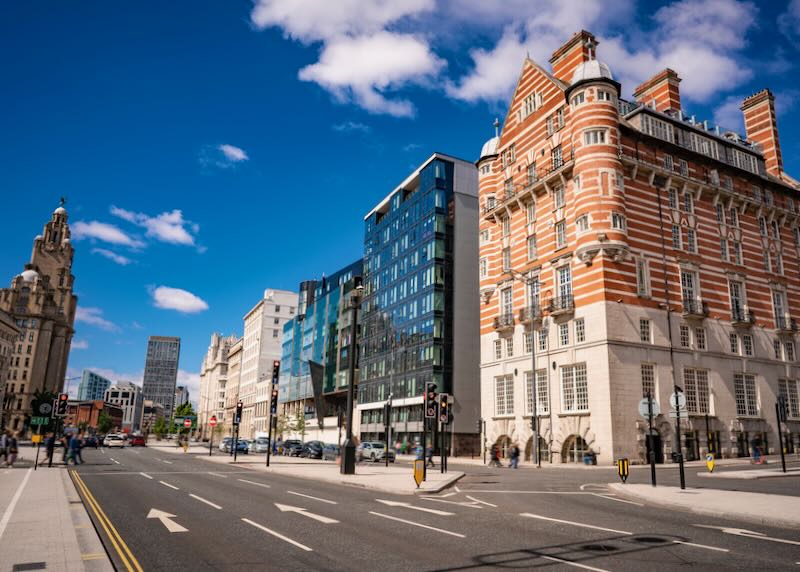
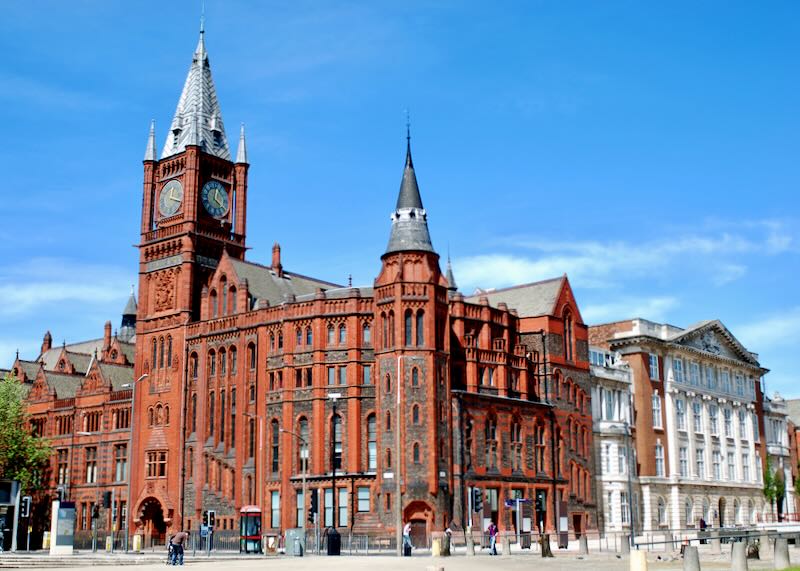
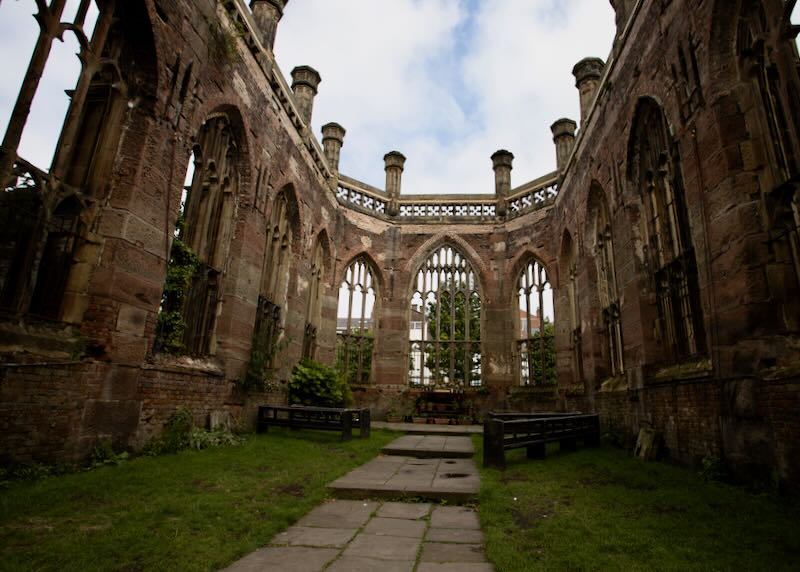
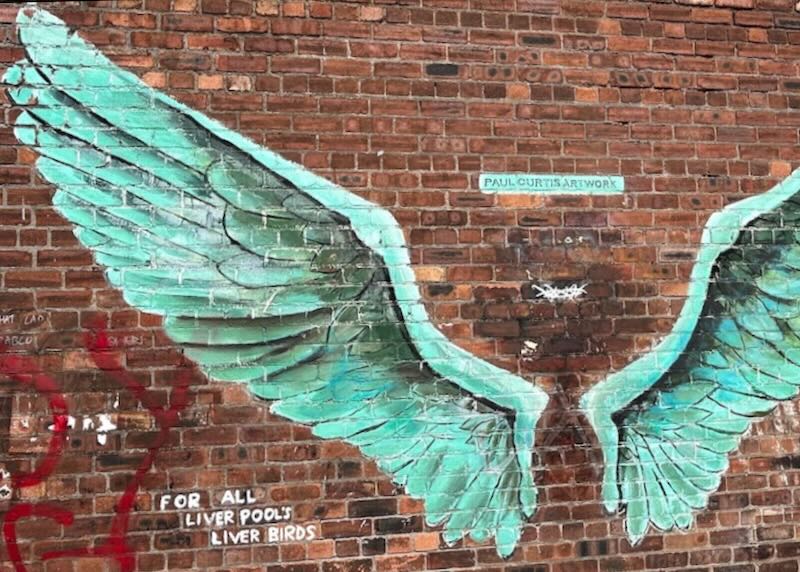
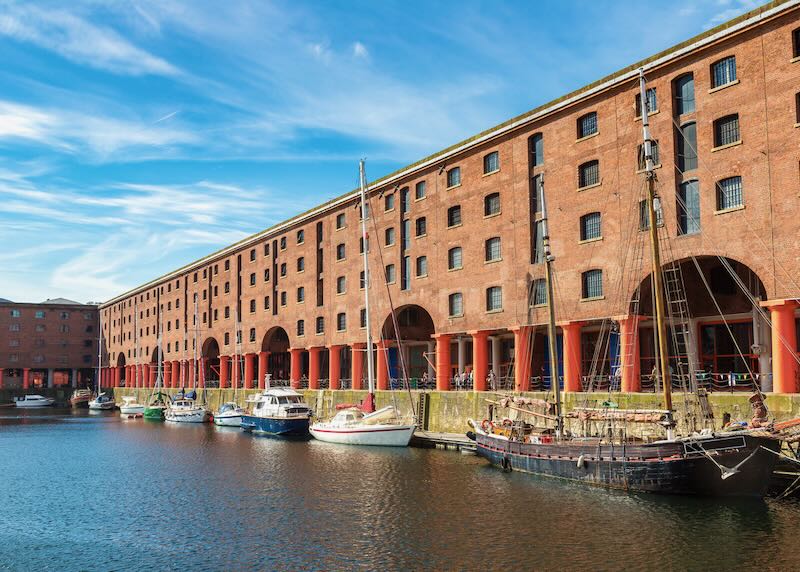
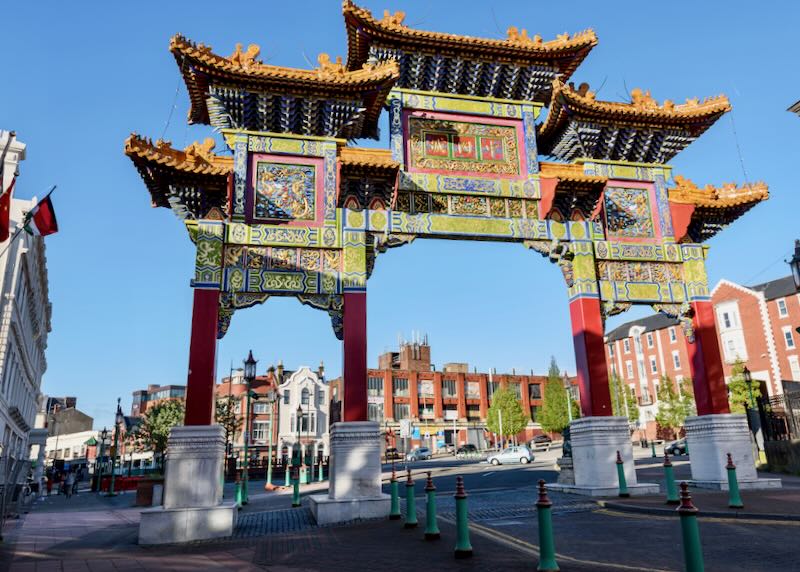
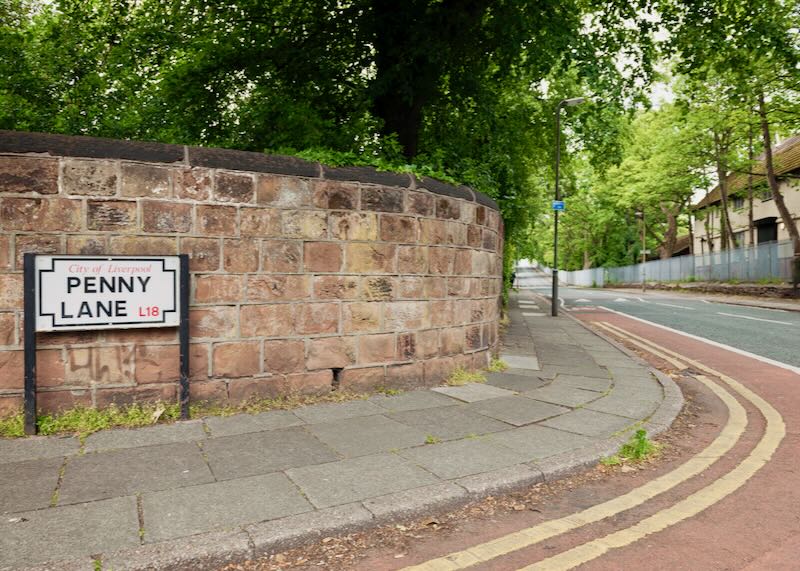
About Santorini Dave